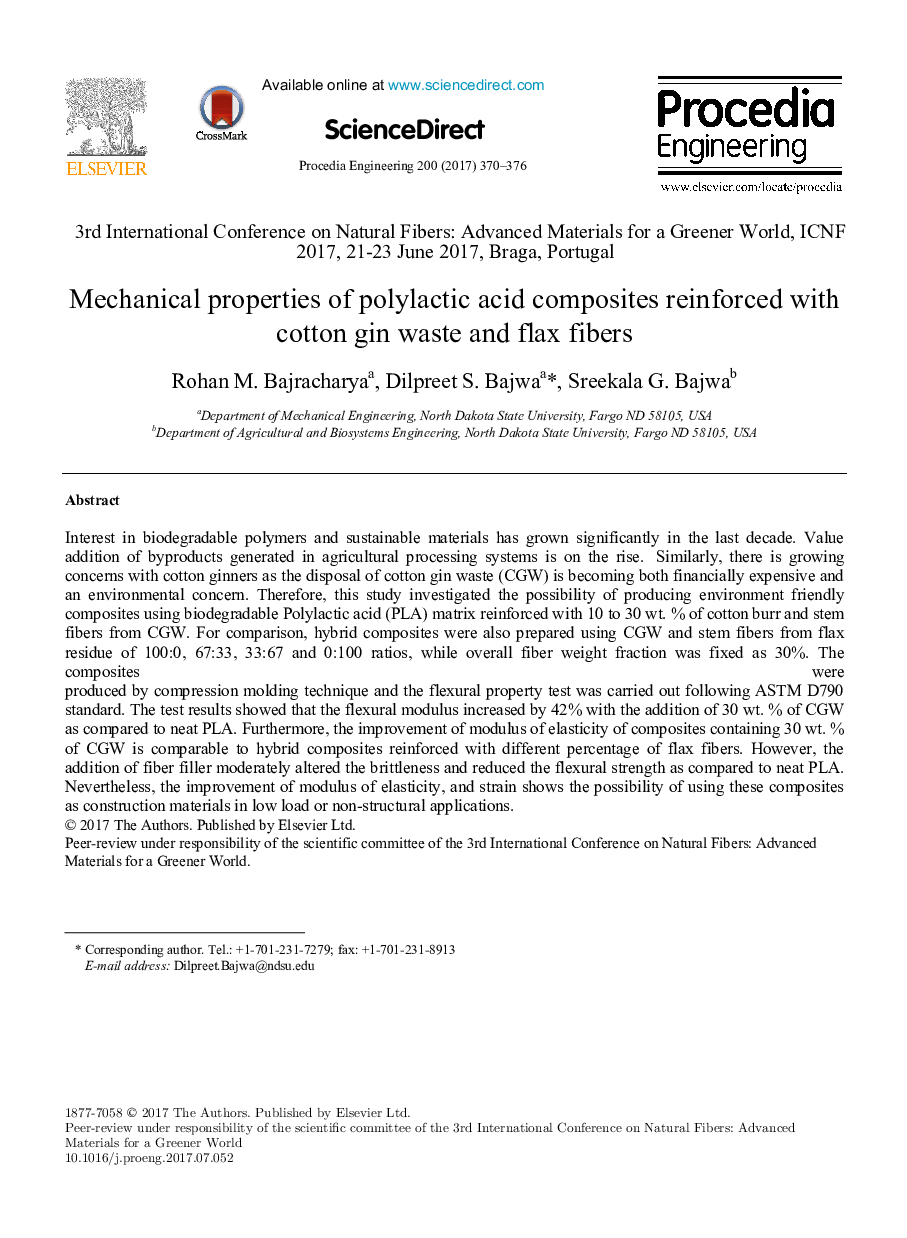| Article ID | Journal | Published Year | Pages | File Type |
|---|---|---|---|---|
| 5026713 | Procedia Engineering | 2017 | 7 Pages |
Interest in biodegradable polymers and sustainable materials has grown significantly in the last decade. Value addition of byproducts generated in agricultural processing systems is on the rise. Similarly, there is growing concerns with cotton ginners as the disposal of cotton gin waste (CGW) is becoming both financially expensive and an environmental concern. Therefore, this study investigated the possibility of producing environment friendly composites using biodegradable Polylactic acid (PLA) matrix reinforced with 10 to 30 wt. % of cotton burr and stem fibers from CGW. For comparison, hybrid composites were also prepared using CGW and stem fibers from flax residue of 100:0, 67:33, 33:67 and 0:100 ratios, while overall fiber weight fraction was fixed as 30%. The composites were produced by compression molding technique and the flexural property test was carried out following ASTM D790 standard. The test results showed that the flexural modulus increased by 42% with the addition of 30 wt. % of CGW as compared to neat PLA. Furthermore, the improvement of modulus of elasticity of composites containing 30 wt. % of CGW is comparable to hybrid composites reinforced with different percentage of flax fibers. However, the addition of fiber filler moderately altered the brittleness and reduced the flexural strength as compared to neat PLA. Nevertheless, the improvement of modulus of elasticity, and strain shows the possibility of using these composites as construction materials in low load or non-structural applications.
